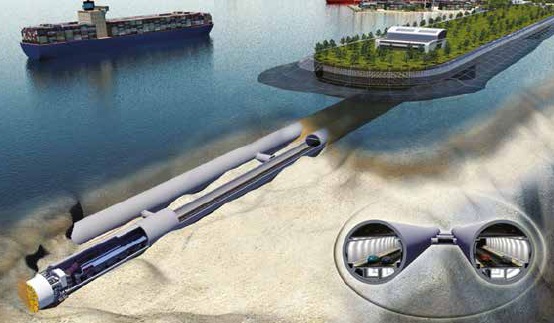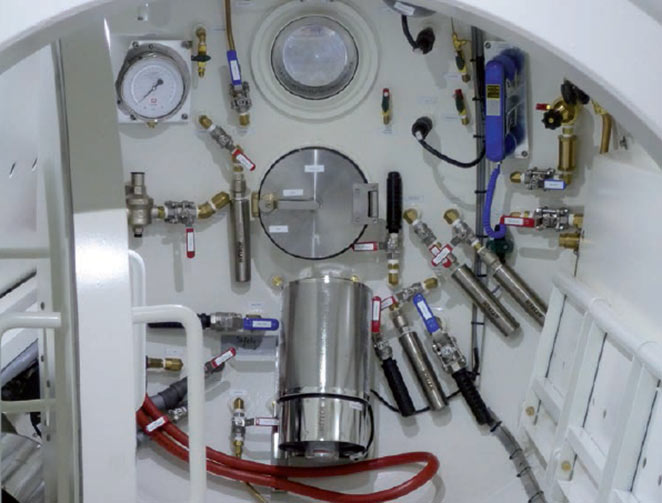Working Groups report progress at WTC 2015 4 June 2015
Eight new documents from the various Working Groups of the International Tunnelling and Underground Space Association (ITA) are published this year and presented during the World Tunnel Congress in Dubrovnik, Croatia, in May. Three of the 13 active Working Groups reported on progress in the fields of site investigation, hyperbaric safety, and immersed and floating tunnels.
Site investigation
ITA Working Group 2 on Research commented on its guidelines for geotechnical site investigation. Work on this particular document started in 2001. “It is meant to give a recommendation on the strategy for site investigation based on international best practices,” said Animateur Chung-Sik Yoo. “It aims at maximising the benefits of site investigation, while avoiding common misleading approaches.”
The benefits of phasing a site investigation are discussed in the report, as are the key reasons for undertaking site investigation. “We stress that site investigations should be viewed as an integral part of the risk management process,” said Yoo. Also, important during the process, are roles of the different stakeholders. “We recommend that the project owner is responsible for the accuracy of information regarding ground conditions. The owner also has the responsibility for approving the extension, or next phase, of a site investigation, and should implement the investigation results at each stage of the project design.”
In addition, the guideline defines the necessary components of a site investigation, including laboratory testing and geotechnical risk maps. “We conclude our report by emphasising the reasons why thorough site investigation is so important, from the point of view of risk management,” said Yoo. “This is the key message we want to get out.”
Hyperbaric works
Donald Lamont, Animateur of Working Group 5 on Health and Safety in Works, presented revisions of the Group’s guidelines for good working practice while working in a high-pressure compressed air (HPCA) environment. “An extension of the guidelines was necessary,” said Lamont, “partly because working with HPCA is a rapidly developing technology.” Until the publication of the original guidelines in 2012 there had been no pre-existing tunnel-specific guidance on such matters. “The 2012 document was published perhaps more quickly than it should have been and could have been more comprehensive,” said Lamont. “In the last three years a lot of knowledge has been gained from projects all over the world.” The document is now a third more extensive than it was before.
One important change is a reduction of the limits of maximum partial pressure of oxygen, and of oxygen dosages. These limits are now aligned with current international hyperbaric practice in the diving industry and in the hyperbaric medical field. “We actually added a lot of references to guidance documents from the diving and offshore industry,” said Lamont. “These are published by the International Marine Contractors’ Association and the Diving Medical Advisory Committee. Both of these bodies are recognised internationally as authorities in the diving sector.”
Information is included also on the symptoms of nitrogen and oxygen narcosis, which might develop when breathing a highly pressurised nitrogen and oxygen mix. There is also additional information on working in conditions of saturated exposure. “A recommendation is also given for standardising the dimensions of mating flanges,” said Lamont. Currently there is no European or international standard for the components that seal the diver shuttle to the TBM working chamber, or the saturation environment. “These must be compatible for all projects. Equipment used on one contract should be transferable to another,” said Lamont.

Hong Kong Labour Department to enforce latest ITA guidelines for compressed air intervention during construction of the Tuen Mun–Check Lap Kok link
High-pressure compressed air work is currently being undertaken in tunnelling projects in Turkey and China, and will shortly begin in Hong Kong. “I am pleased to say that our report is currently being used by the Hong Kong Labour Department, as a basis for assessing safety for high pressured compressed air work on the Tuen Mun-Check Lap Kok Link,” said Lamont.
Immersed tunnels
Working Group 11 on Immersed Floating Tunnels has updated its Owners’ Guide to Immersed Tunnels, which was first issued in 2011. The update includes eight new appendices and a revised glossary. “The purpose of this guide basically answers this question: what does an owner need to know and document for the planning, construction and operation of an immersed tunnel,” said Animateur Jonathan Baber.
The bulk of the information is contained in the annexes, of which 45 in total are planned. “In 2011 we published the first six, and this year we completed eight more,” explained Baber. “We plan to finalise the document in 2017.” Among the annexes added this year, one explains the use of closure joints. Another concerns element construction in casting basins, and another related to site investigation works. “These are quite specific for immersed tunnels,” said Baber.
A further annex concerning seismic design recommends good practices for analysing the seismicity of a seismic region. “The annex on compaction grouting is linked to this, because it is quite often the case that in seismic regions ground improvement is required,” said Baber. “Eventually we aim to produce an essential guide for owners and other bodies considering water crossings.”
References
- ITA-AITES Working Groups
- ITA-AITES Working Group 2 – Research
- ITA-AITES Working Group 5 – Health and Safety in Works
- ITA-AITES Working Group 11 – Immersed and Floating Tunnels
- Quantity above quality at WTC2015 Croatia – TunnelTalk, May 2015
- Midtown construction passes half way – TunnelTalk, May 2015
- Hong Kong awards major undersea highway – TunnelTalk, September 2013
- Mega TBM ordered for Hong Kong undersea crossing – TunnelTalk, September 2014
- Links across the waters – Strait Crossings conference report – TunnelTalk, January 2010
- ITA Working Groups in focus – TunnelCast, May 2010
|
|
|
|
|
Add your comment
- Thank you for taking the time to share your thoughts and comments. You share in the wider tunnelling community, so please keep your comments smart and civil. Don't attack other readers personally, and keep your language professional.



